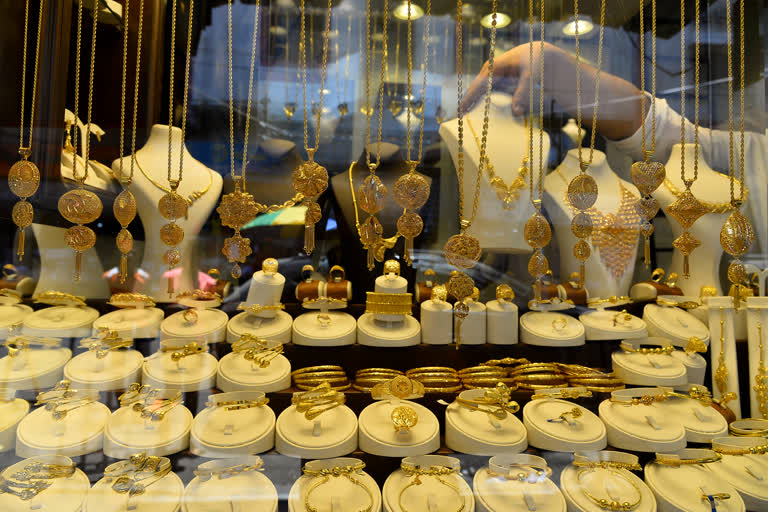Business Desk, ETV Bharat: Dhanteras is considered to be an auspicious occasion to buy gold by millions of Indians, and most of this purchase happens in the form of jewellery. But consumers make some common mistakes when buying jewellery, which can cost them dearly, as losses can range from thousands to lakhs.
So here are the five things that you should definitely check while buying gold jewellery on Dhanteras in order to make the most of your money:
1) Purity levels
The purity of gold is determined by karats, with 24 karat gold being 99.9% pure and 22 karat gold being 92% pure. Never purchase jewellery without checking karats as it will help you determine the purity level of the gold you are buying, which would further help you assess its resale value. However, keep in mind that 24 karat gold is not suited to make jewellery, which is why jewellers either use 14, 18 or 22 karat gold.
2) Hallmarked jewellery
To ascertain the purity levels, you show know about hallmarking. Hallmark is the official mark used in India as a guarantee of purity or fineness of precious metal articles. Hallmarking was introduced to protect the public against adulteration and to obligate manufacturers to maintain legal standards of fineness/purity. In India, at present two precious metals namely gold and silver have been brought under the purview of Hallmarking.
As a customer, always check for these four BIS hallmarking components to ensure the purity of gold – the BIS mark, purity in karat and fineness, assaying and hallmarking identification mark/number and jeweller’s Identification mark/number.
For instance, purity in karat and fineness can be denoted by any of the following -- 22K916 (corresponding to 22 karats), 18K75 (corresponding to 18 karats), 14K585 (corresponding to 14 karats).
Read more: Sovereign gold bonds: Here’s how to buy ahead of Dhanteras, Diwali
3) Current gold prices
Everyone knows that the market price of gold changes every day. But also remember that pricing changes with the purity level and cities, too. All jewellery stores would display the daily bullion rates for consumers. But that’s not what everybody would have to pay. You should first look at the bullion price and then discount it based on the purity of gold.
For example, if the cost of 10 gm gold is Rs 51,000 at bullion rate in Delhi, then the price of 22K gold (91.6% purity) will be around Rs 46,700.
4) Making charges
Making charges are essentially the labour charges involved in creating and manufacturing jewellery pieces. Making charges vary depending on the type and design of gold jewellery and also whether it is machine-made or hand-made. Machine-made jewellery tends to be cheaper than man-made jewellery. Making charges are also levied on per gram basis and are linked to the gold rates.
So, essentially the heavier your jewellery piece and the more intricate the designing, the higher would be the making charges.
5) Weight of stones
Most gold jewellery in India is sold by weight, meaning heavier pieces cost more. Many times, precious stones like diamond and emerald are added to gold jewellery to make them more attractive, which makes the piece heavier.
Now, most jewellers weigh a jewellery piece in its entirety. So you might end up paying for the amount of gold which is not actually present in the piece. But when you go and resell it, only the weight of actual gold is taken after removing the studded stones and then your resale value is determined. So, keep in mind that purchasing studded jewellery can prove to be a not so value-for-money affair.



